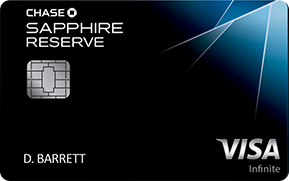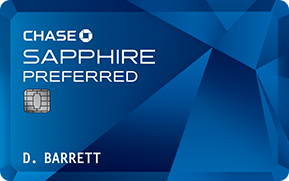Review: Chase Sapphire Reserve Credit Card
Since the Sapphire Reserve card’s launch in 2016, it has been viewed as one of the top – if not the top – travel rewards credit cards available by many frequent travelers and Miles and Points hobbyists.
Now Chase is making some changes to the Reserve card which may, or may not, make it better in the eyes of current and potential holders.
Before I get into the nitty gritty of Chase’s changes to the Sapphire Reserve card, a caution to those who may want to pull the application trigger.
The Chase Sapphire Reserve card, like all Chase credit cards, falls under Chase’s 5/24 rule.
Which means, if you’ve been approved for 5 or more credit cards (from any bank) within the last 24 months, you likely will not be approved for the Sapphire Reserve card.
Chase will do a hard pull on your credit, resulting in a roughly 5 point (temporary) drop in your FICO score and you’ll have no new credit card/sign-up bonus to show for the effort.
If you’re at or over 5/24, apply with the above in mind.
Now, with that out of the way, let’s take a look at the Chase Sapphire Reserve card and the changes Chase has made.
The Chase Sapphire Reserve
Sapphire Reserve Sign-Up Bonus
The Sapphire Reserve is offering 50,000 Ultimate Rewards points after spending $4,000 on purchases in the first 3 months from account opening.
Annual Fee
The annual fee for the Sapphire Reserve is a whopping $450 $550 per year and is not waived the first year of card membership. The $100 increase is the first change Chase has made to the Reserve card and it’s a substantial one, that’s for sure.
But, like many of the premium travel credit cards the Sapphire Preferred is competing with – the American Express Platinum and Citi Prestige – the high annual fees are offset somewhat with travel credits, the details of which I’ll get to in a bit.
Ongoing Benefits
The Sapphire Reserve earns 3 Ultimate Rewards points per dollar spent on travel and dining worldwide, and 1 Ultimate Rewards point per dollar spent on all other purchases.
With Chase, the travel category is extremely generous, including; airlines, hotels, motels, timeshares, campgrounds, car rental agencies, cruise lines, travel agencies, discount travel sites, operators of passenger trains, buses, taxis, limos, ferrys, tolls, bridges, highways and parking lots and garages.
And the dining category isn’t too shabby in its breadth, either, including the obvious sit-down restaurants and fast-food/fast-casual establishments as well as Starbucks and the like, bars that don’t serve food and even caterers (caterers may no longer earn the 3x points).
So, you can see how this card can really rack up the Ultimate Rewards points if you’re a frequent traveler, especially if your employer reimburses you for your travel expenses.
Chase aficionados are intimately familiar with how valuable Ultimate Rewards points really are.
The Ultimate Rewards program is my absolute favorite of any of the transferable points programs because of its wide array of travel partners.
Ultimate Rewards points can be transferred at a 1:1 ratio to:
Airlines: United, Southwest Airlines, Virgin Atlantic, British Airways, JetBlue, Air France/KLM, Aer Lingus, Iberia and Singapore Airlines.
Hotels: Hyatt, IHG, and Marriott.
Some of the other benefits offered by the Reserve card include:
- Global Entry or TSA Pre-Check Fee Credit ($100 value)
- Complimentary Priority Pass Select airport lounge access (restaurants included unlike the Amex Platinum card)
- Special car rental privileges at National Car Rental, Avis, and Silvercar
- Access to benefits associated with The Luxury Hotel & Resort Collection
- No foreign transaction fees
- Primary car rental insurance coverage
- A variety of travel and purchase protections
And…a $300 annual travel credit.
The travel credit is automatically applied as a statement credit to reimburse travel purchases charged to your card.
Pretty much anything that falls into Chase’s travel category is fair game for reimbursement.
Which means airline charges (airfare included) and hotel charges would obviously be included, but so would things such as train fare, bus fare and even parking garage charges, which could benefit less-frequent travelers who live in large cities and pay a significant amount in commuting-related fees.
New Benefits
The new benefits that Chase has added as of January 12, 2020 include:
New Lyft partnership and accompanying benefits.
- Earn 10x Ultimate Rewards points on Lyft purchases paid for with the Sapphire Reserve card (through March 2022)
- Complimentary Lyft Pink membership (through March 2022) which includes, 15% off unlimited car rides, priority airport pickups, relaxed cancellations (three cancellation fees waived each month if you rebook within 15 minutes), waived lost and found fees and 3 free bike/scooter riders per month
DoorDash partnership and benefits. You can read our piece “Select Chase Credit Card Holders Can Enjoy DoorDash’s DashPass Free of Charge” for details. Below are the quick hit points specific to the Reserve card.
- $60 in DoorDash credits during 2020 and another $60 in 2021 – this is a lump sum that can be used in any amount you wish
- DashPass for up to 2 years – provides free deliveries (no delivery fee) on orders from eligible restaurants and reduced service fees
My Take
The Sapphire Reserve is a great card to have if you travel often.
However, it becomes murky as to whether the card is a keeper if you’re not a frequent traveler.
And even more so with its increased annual fee.
If there’s any question that the $300 annual travel credit would be used, then this definitely is not a card you’d want to keep year two and beyond – or even consider.
And even if you do fully use the $300 travel credit each year, you have to look closely at the other benefits to see if holding this card outweighs holding the Chase Sapphire Preferred, the Reserves’ less benefit-laden sibling.
Because, when you take the $300 travel credit out of the equation, you’re left with a $150 $250 annual fee credit card.
The Sapphire Preferred’s annual fee is $95, and offers the ability to build Ultimate Rewards points at the rate of 2 points per dollar spent on dining and travel, or 1 Ultimate Rewards point less than the Reserve.
In the past, others have done the calculation, looking at whether the $450 annual fee and greater Ultimate Rewards earning power is worthwhile, and it pretty much was a wash when compared to the Sapphire Preferred’s earning levels and annual fee.
Now that the Reserve’s annual fee is $550, the Sapphire Preferred may have a bit of an advantage in the view of many cardholders.
I’m on the fence, but leaning heavily toward it probably being better to go with the Sapphire Preferred and its lower annual fee for many.
But, that’s where you also have to weigh the other perks associated with the Sapphire Reserve and see if they are actually worth that extra $155 (over and above the $95 fee for the Sapphire Preferred) in annual fee to you.
An argument can be made for many of the perks being more than worth that $155.
Dig deep, both into the card’s fine print and your soul to see if you really can justify the higher annual fee of the Reserve long-term.
Wrap Up
Chase had put forth a worthy contender in the premium travel rewards credit card category, but its worth has changed a bit with its increased annual fee of $550.
It still has a large and versatile travel credit – $300 – when compared to all the premium cards travel rewards cards, as well as its other associated benefits, both old and new, to keep it appealing.
Your travel and spend habits, however, should be the deciding factor as to whether this card is right for you.
Just remember the 5/24 restrictions I mentioned earlier in the piece. That’s a hurdle many, unfortunately, may not be able to overcome while in pursuit of this highly coveted travel rewards card.


